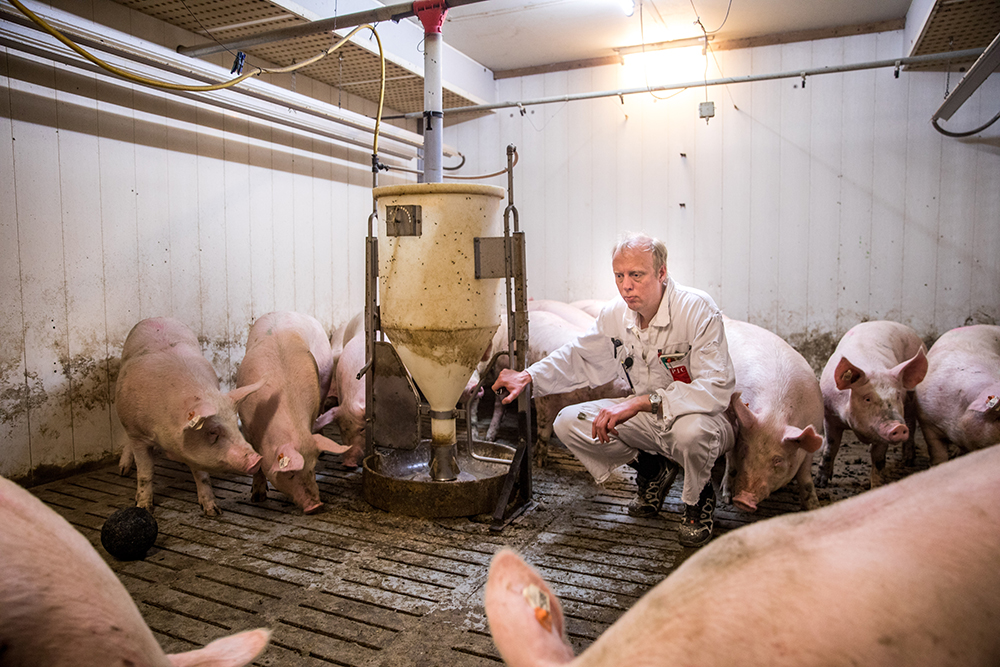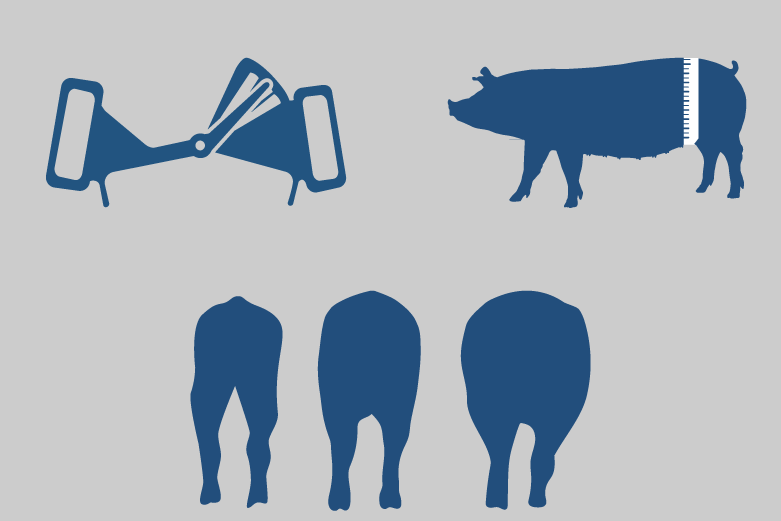Previous research has shown that increasing feed intake after weaning in sows with poor body condition can improve reproductive performance. The objective of this study was to determine the effect of the level of feed intake from weaning to service in sows in good body condition on subsequent reproductive performance.
638 sows within each parity block (P1, P2, P3, etc.) were randomly assigned to one of three post-weaning feed level treatments and moved to the weaning room to evaluate the post-weaning effect of feed intake on sow reproductive performance. The treatments were: 2.7 kg feed/day, 3.6 kg feed/day and 5.5 kg feed/day.
The sows included in the study had a body condition score (BCS) ≥ 2.75 (on a 5-point scale, with 3 being the ideal BC), and had a lactation duration between 18 and 23 days. At weaning, sows were grouped according to weaning cycle and day of weaning, and then randomly assigned to one of the three treatments. The diets for the study were based on maize meal, soybean meal and distillers’ soluble. They were formulated to contain 0.55 % standardised digestible Lysine (SID) and 13,4 MJ ME/kg. All other nutrients met or exceeded NRC requirements for pregnant sows. All sows were fed two equal feedings per day with free access to water. Treatments were maintained until the first day of service. After insemination, sows were fed 1.8 kg throughout gestation. The main effects of parity and treatment, and the interactions between the two, were evaluated. In these parameters the differences were not significantly different between treatments (2.7, 3.6 or 5.5 kg, respectively).
Table: Feeding levels during WTS and reproductive performance
| Feed offered during WTS (kg/day) | Actual feed consumption during WTS (kg/day) | WTS, days | Farrowing rate | Total born at subsequent farrowing | |
|---|---|---|---|---|---|
| Group 1 | 2.7 | 2.68 | 5.13 | 95.63 | 14.33 |
| Group 2 | 3.6 | 3.54 | 4.98 | 95.58 | 13.93 |
| Group 3 | 5.5 | 5.18 | 4.97 | 94.67 | 13.92 |
| P < 0.01a | P > 0.10b | P > 0.10b | P > 0.10b |
b No significant difference
WTS – Wean-to-Service Interval
In conclusion, in sows with good body condition at weaning, there was no benefit in conception or live birth rates in subsequent cycles when fed above 2.75 kg/d.
Source: A. Graham, K. J. Touchette, S. Jungst, M. Tegtmeyer, J. Connor and L. Greiner. Impact of feeding level postweaning on wean to estrus interval, conception and farrowing rates, and subsequent farrowing performance.
PIC’s Comments
Pablo Magallón & Patricia Blanco, Technical Services PIC Southern Europe
Correct feeding at the wean-to-service interval (WTS) is very important for the subsequent reproductive performance of the animals. In this study we tried to find benefits of feeding more feed during WTS to sows with good body condition (BC) after weaning and found that there was no benefit above 2.7 kg/day, as the performance of the animals was similar in the parameters studied. Feeding during WTS is important, but it is the feeding during lactation, especially in the last third of lactation, that begins to determine how the sows will perform in their next cycle.
This study was only carried out on a population of animals in good body condition (2.75 out of 5, with 3 being ideal).
If we evaluate the BC of sows just before farrowing and after weaning, we can see the loss of BC that these animals have suffered during their lactation period. Recent studies have shown that the loss of BC during lactation is more important than the BCS at weaning. Therefore, animals with good BC at weaning may show poor reproductive performance if they entered farrowing with an excess of BC and have suffered a significant loss of BC.
In any case, maintaining a good BC in more than 90% of the herd and an adequate feed according to our genetics, management and facilities is decisive to obtain a good reproductive performance of the sows. To achieve this, it is necessary to maintain on-farm routines for analysing the BC of the herd at critical times (farrowing, weaning and first third of gestation) and to use objective and easy-to-use measurement tools such as the Caliper.




